#CSM-008
Explore tagged Tumblr posts
Text
Apollo Program: Block I Command and Service Module tests

CSM-008 shown inside of Chamber A during a test of the carbon arc solar simulators mounted on the side of the chamber.
"The initial tests in chamber A occurred later in 1966, when Apollo Command and Service Modules (CSM-008) underwent a series of trials to demonstrate the adequacy of the Block I version of the spacecraft for manned earth-orbital missions.

The crew shown entering CSM-008 for the start of the first manned thermal-vacuum test on August 1, 1966
The contractor for the CSM, North American Aviation (NAA) in Downey, California, had performed an altitude test on a Block I Command Module in the summer of 1966. Company engineers Erman, Abell and Moyles spent two weeks flying a simulated mission in a CM inside NAA’s vacuum chamber – called the 'bell jar'. Because the 5-meter chamber was too small to hold the complete Apollo spacecraft, electrical power, oxygen and drinking water were provided by ground support equipment.

North American Aviation engineers Richard Erman, John Moyles and Norman Abell sitting inside a Block I Apollo CM on March 29, 1966 at the beginning of their simulated two-week mission inside 'the bell jar' at North American’s Downey, California facility.

Diagram showing the major components of the SESL Chamber A and the placement of the Apollo CSM test article. Click on image to enlarge.
Houston’s SESL could accomodate the complete spacecraft, including the Service Module, and so CSM-008 spent 83 days inside chamber A in the second half of 1966, during which time a 92-hour unmanned test and a 163-hour manned test were conducted. During this six-day manned period the spacecraft was 'flown' by astronauts Ed Givens and Joe Kerwin, with the third seat occupied by Joe Gagliano, an Air Force captain on assignment to MSC’s Flight Crew Support Division. The test revealed several design flaws and procedural errors that would have to be corrected before the first manned Apollo flight, planned for early 1967.

CSM-008 shown inside SESL Chamber A with work platforms and the access walkway in place."
source, source
NASA ID: S66-59204
50 notes
·
View notes
Text
Maintenance protective covering is being installed onto the Apollo Server Module (SM-008) in Building 290, Downey, California.
Date: April 15, 1966
SDASM Archives: Casson_0016

#CSM-008#Apollo CSM Block I#NASA#Apollo Program#Construction#North American Aviation#Factory#Downey#California#April#1966#my post
46 notes
·
View notes
Text
Apollo Program: Block I Command and Service Modules

The Apollo Command and Service Module (CSM) contract was award to North American Aviation on November 28, 1961. At the time, the plan was to land the entire CSM on the lunar surface via the direct ascent and the initial design did not include a means to dock with another spacecraft. Later on this was changed to the lunar orbit rendezvous and lunar landing would be preform via the Lunar Module. This required a major redesign of the CSM and in 1963, NASA decided the most efficient way to keep the program on track was to proceed with the development in two versions:
Block I: the preliminary version for early low Earth orbit test flights only.
Block II: the new lunar-capable version, which included a docking hatch, incorporating weight reduction and lessons learned from the Block I.
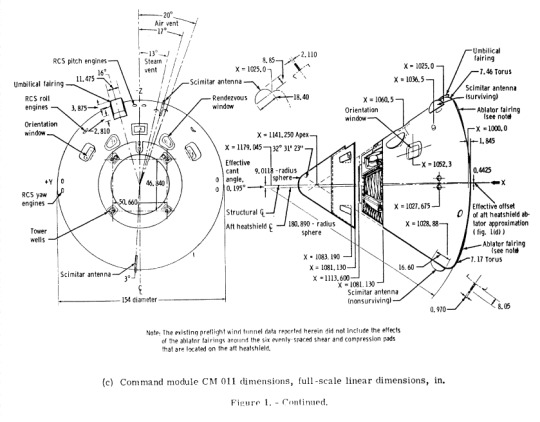

The CSM Block I was to be used for all uncrewed Saturn IB (AS-201 & AS-202) and Saturn V (AS-501 & AS-502) test flights, plus two manned missions. This was changed to only one in late 1966, being Apollo AS-204, aka Apollo 1. After the Apollo 1 fire all manned missions were to use the improved Block II versions.
Block I Command and Service Modules produced:
CSM-001: systems compatibility test vehicle, used on propulsion tests at White Sands Missile Range. Completed tests on September 7, 1968. CSM scrapped.
CSM-002: used for powered on tumble abort tests, flew on A-004 Little Joe II, January 20, 1966, at White Sands Missile Range. Modified to 002A.
CM-002A: used to in land drop tests. Modified to 002B
CM-002B: used on pogo tests at Downey, California. Modified to BP-23. On display

On display at the Cradle of Aviation Museum, Garden City, New York.
CSM-003: cancelled before construction began
CSM-004: structural tests, CM modified to 004B.
CM-004A: Used for Thermal and dynamic tests, redesignated BP-27 on the Saturn I Block II (SA-5D). On display.
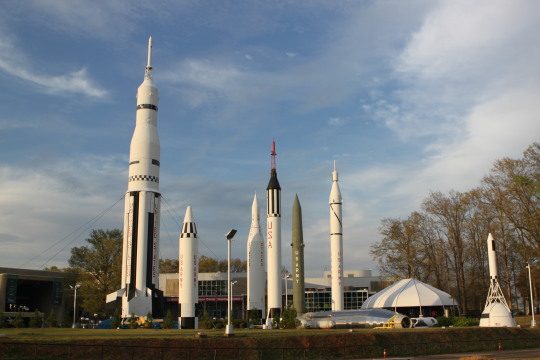
On display with the Saturn I Block II Dynamic Test Vehicle at the U.S. Space & Rocket Center, Huntsville, Alabama.
CM-004B: Tested a new unified hatch design at Downey, California. CM offered to Smithson but declined, later scrapped by Rockwell at Downey, CA.
CSM-005: cancelled before construction began
CSM-006: CM used for systems capability tests and modified to Block II for ESC tests at AiResearch in Los Angeles, CA. Later used for demonstrating tumbling debris removal systems. CM offered to Smithsonian but declined, later scrapped. SM redesignated as SM-010, on display with BP-23A.

BP-23A and SM-010 on display at the U.S. Space & Rocket Center, Huntsville, Alabama.
CSM-007: various tests including acoustic vibration and drop tests, and used as a ground test vehicle. CM modified to 007A. SM used for fitcheck of docked model facility, current location is unknown.
CM-007A: used by Astronauts for water egress training, water-survival training and extended recovery training in the Gulf of Mexico. CM was refitted with Block II improvements. Underwent testing for Skylab at the McKinley Climatic Laboratory, Eglin AFB, Florida, 1971–1973. On display.
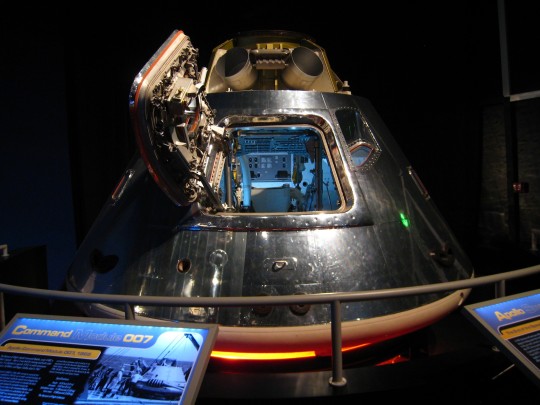
CM-007A is on display at the Seattle Museum of Flight, Seattle, WA.
CSM-008: complete systems spacecraft used in thermal vacuum tests. CM modified to 008A, SM offered to Smithsonian but declined (August 1973), later scrapped by Rockwell International at Downey, CA May 1977.

CSM-008 in Chamber A at JSC.
CM-008A: used in land tests at Downey, CA. CM scrapped by March 1971.
CSM-009: flew on AS-201 (later designated Apollo 2), CM modified to 009A.
CM-009A: modified with support structural tests for land impacts. CM offered to Smithsonian but declined, on display.
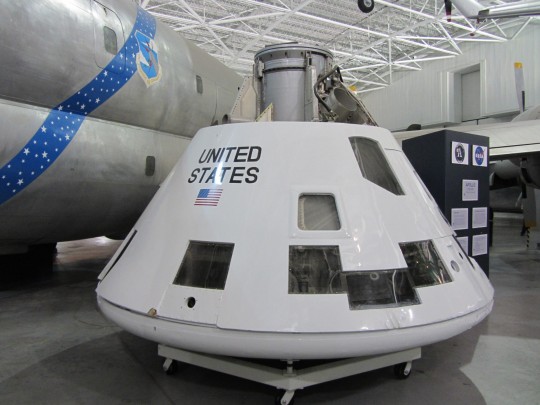
On display at the Strategic Air and Space Museum in Ashland, Nebraska
CSM-010: originally intended for a launch abort test, mission cancelled and CM was modified into 004A. SM cancelled.
CSM-011: flew on AS-202 (later designated Apollo 3), CM modified to 011A.
CM-011A: used on land impacts tests and extensively damaged. CM offered to Smithsonian and is on display.

On display at the USS Hornet Museum in Alameda, California.
CSM-012: intended for AS-204 (Apollo 1). CM is in storage at Langley Research Center. SM scrapped. Hatch on Display.
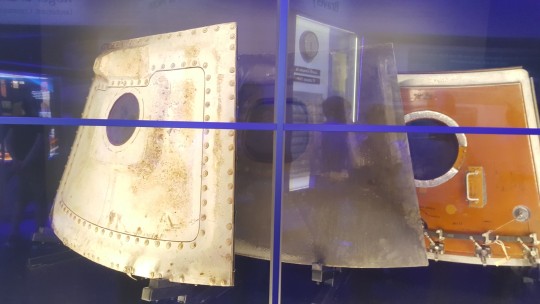
Apollo 1 hatch on display at the Kennedy Space Center.
CSM-013: cancelled before construction began
CSM-014: intended for AS-205 (Apollo 2). CM disassembled as part of Apollo 1 investigation and modified to 014A. SM used on AS-502 (Apollo 6).
CM-014A: ground testing. CM Scrapped May 1977.
CSM-015: CM cancelled before construction began. SM-015 was used with BP-30 and LES-014 for Swing Arm tests and backup spacecraft for Apollo 6. On display.
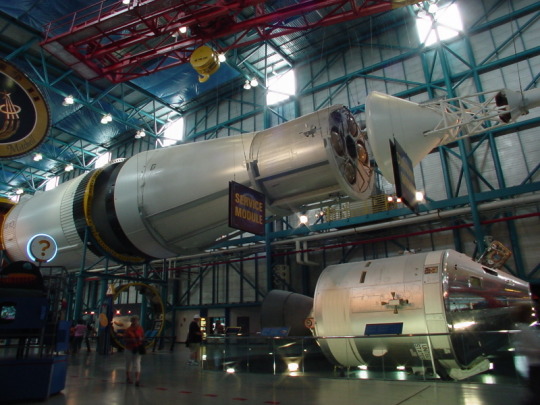
On display at the Kennedy Space Center.
CSM-016: CSM cancelled before construction began. Only the launch escape tower (LES) completed, on display with BP-27 the Saturn I Block II (SA-5D) at U.S. Space & Rocket Center, Huntsville, Alabama.
CSM-017: flew on Apollo 4 (AS-501). CM on display. SM destroyed when the propellant tank explosion during ground testing. CM on display.

On display at the Stennis Space Center in St. Louis, Mississippi.
CSM-018: cancelled before construction began
CSM-019: cancelled before construction began
CSM-020: flew on Apollo 6 (SA-502). SM flew on Apollo 4. CM on display.
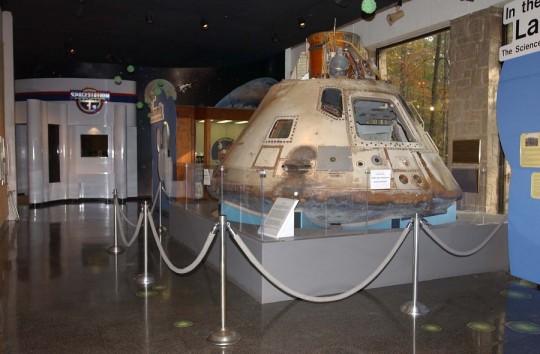
On display at the Fernbank Science Center in Atlanta, Georgia.
source, source, source, source, source, source, source, source, source, source, source
NASA ID: link, link, JSC-03600, S66-59204
#Apollo Program#NASA#CSM-001#CSM-002#CSM-003#CSM-004#CSM-005#CSM-006#CSM-007#CSM-008#CSM-009#CSM-010#CSM-011#CSM-012#CSM-013#CSM-014#CSM-015#CSM-016#CSM-017#CSM-018#CSM-019#CSM-020#Apollo 1#Apollo 2#Apollo 4#Apollo 6#AS-201#Apollo CSM Block I#A-004#my post
128 notes
·
View notes
Text







Apollo CSM-008, a Block I Command and Service Module, being loaded on the work stand installation in bldg. 32, Chamber ''A'' of the Space Environment Simulation Laboratory, for thermal vacuum tests of the Apollo Command Module systems.
Date: May 18, 1966
NASA ID: S66-34205, S66-34207, S66-34211, S66-34212, S66-34213, S66-34214, S66-42570
#thermal vacuum tests#Apollo CSM Block I#CSM-008#NASA#Apollo Program#Chamber A#Lyndon B. Johnson Space Center#Johnson Space Center#Manned Spacecraft Center#Houston#Texas#May#1966#my post
37 notes
·
View notes